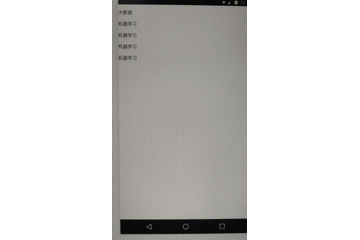版权声明:本文为博主原创文章,未经博主允许不得转载。 https://blog.csdn.net/qq_36407748/article/details/86658638
先看效果(请求前加载loading,请求完毕后关闭loading
配置的请求头token

axios 的统一封装api
# 本实例是以react项目演示
# src项目目录
|-- api
|-- index.js 统一封装接口api
|-- assets
|-- loading.css c3完成的loading的样式
|-- utils
|-- http.js axios 封装
|-- App.js 组件
http.js(此封装会在每个接口请求前都会加载一次loading)
import axios from 'axios';
// 创建实例时设置配置的默认值
/**
* 自定义实例默认值
*/
var instance = axios.create({
// baseURL: 'http://yapi.demo.qunar.com/mock/1152', // 公 共接口url(如果有多个的公共接口的话,需要处理)
timeout: 3000, // 请求超时
});
// /api/getUserById
// 请求拦截器, 进行一个全局loading 加载,这种情况下所有的接口请求前 都会加载一个loading
/**
* 添加请求拦截器 ,意思就是发起请求接口之前做什么事,一般都会发起加载一个loading
* */
// 如果不想每个接口都加载loading ,就注释掉请求前拦截器,在http这个类中处理
instance.interceptors.request.use(
config => {
// 在发送请求之前做些什么(... 这里写你的展示loading的逻辑代码 )
isShowLoading(true);
// 获取token,配置请求头
// const TOKEN = localStorage.getItem('Token')
// 演示的token(注意配置请求头,需要后端做cros跨域处理,我这里自己前端配的跨域)
const TOKEN = '1fd399bdd9774831baf555ae5979c66b'
if(TOKEN){
// 配置请求头 token
config.headers['Content-Type'] = 'application/x-www-form-urlencoded';
config.headers['Authorization'] = TOKEN;
}
return config;
},
error => {
// 对请求错误做些什么,处理这个错误
// 可以直接处理或者展示出去,toast show()
console.warn(error);
return Promise.reject(error);
}
);
/**
* 添加响应拦截器,意思就是发起接口请求之后做什么事,此时只有两种情况,
* 要么成功,要么失败,但是不管成功,还是失败,我们都需要关闭请求之前的
* 发起的loading,那既然要处理loading,就把loading做成全局的了,
* 这里自定义一个处理加载loding 和关闭loading的方法,而且这个loading
* 要不要加载,会根据外部传入的布尔值来决定,默认是false:不展示
* */
instance.interceptors.response.use(
function(response) {
// 对响应数据做点什么
isShowLoading(false);
console.log(response)
// 根据你们家的后端定义请求过期后返回的参数,处理token过期问题
// 我这个接口木有token啊,这里演示下
// 判断
const {status} = response.data;
// 判断状态码401或者其它条件,不知道判断哪个的去问你家后台
if(Object.is(status,401)){
// token过期后处理
// 1.删除你本地存储的那个过期的token
// 2. 跳转到登陆页(因为没有装路由,不写了,重新登陆赋值)
// todo...
}
return response;
},
function(error) {
// 对响应错误做点什么
isShowLoading(false);
return Promise.reject(error);
}
);
// 如果与你配合的ui中,有loading组件的话,你直接用它的就可以了
// to do...
/**
* 是否开启loading
* @param {*} payload { type:Boolean }
*/
function isShowLoading(payload) {
// 获取dom节点
const loading = document.getElementById('loading');
payload ? loading.style.display = 'block' : loading.style.display = 'none';
}
/**
* 使用es6中的类,进行简单封装
*/
class http {
// 使用async ... await
static async get(url, params) {
console.log(params)
return await instance.get(url, {params})
}
static async post(url, params) {
console.log(params)
return await instance.post(url, params);
}
}
export default http;
// 处理跨域,在 package.json ,最后一行加入这个
"proxy":"http://yapi.demo.qunar.com/mock/1152"
自定义一个c3的 loading
在index.html
<!DOCTYPE html>
<html lang="en">
<head>
<meta charset="utf-8" />
<link rel="shortcut icon" href="%PUBLIC_URL%/favicon.ico" />
<meta
name="viewport"
content="width=device-width, initial-scale=1, shrink-to-fit=no"
/>
<meta name="theme-color" content="#000000" />
<link rel="manifest" href="%PUBLIC_URL%/manifest.json" />
<title>React App</title>
</head>
<body>
<noscript>You need to enable JavaScript to run this app.</noscript>
<div id="root"></div>
<!-- 自定义的loading -->
<div id="loading">
<div class="spinner">
<div class="double-bounce1"></div>
<div class="double-bounce2"></div>
</div>
</div>
</body>
</html>
loading的样式. — assets/loading.css
body {
margin: 0;
padding: 0;
}
#loading {
width: 100%;
height: 100%;
position: absolute;
top: 0;
z-index: 99;
display: none;
justify-content: center;
align-items: center;
background-color: rgba(0, 0, 0, 0.2);
}
.spinner {
width: 60px;
height: 60px;
position: absolute;
top: 50%;
left: 50%;
margin-left: -30px;
margin-top: -30px;
}
.double-bounce1, .double-bounce2 {
width: 100%;
height: 100%;
border-radius: 50%;
background-color: #4403f7;
opacity: 0.6;
position: absolute;
top: 0;
left: 0;
-webkit-animation: bounce 2.0s infinite ease-in-out;
animation: bounce 2.0s infinite ease-in-out;
}
.double-bounce2 {
-webkit-animation-delay: -1.0s;
animation-delay: -1.0s;
}
@-webkit-keyframes bounce {
0%, 100% { -webkit-transform: scale(0.0) }
50% { -webkit-transform: scale(1.0) }
}
@keyframes bounce {
0%, 100% {
transform: scale(0.0);
-webkit-transform: scale(0.0);
} 50% {
transform: scale(1.0);
-webkit-transform: scale(1.0);
}
}
在 api/index.js 统一封装api接口
import http from '../utils/http'
/**
* 这里统一处理项目中所有的 api 接口
*/
// demo 某功能比如获取一个列表
export const getData = params => http.get('/api/getUserById',params);
// to do ...
在组件中调用 App.js 中
import React, { Component } from 'react'
// 引入封装的接口方法
import { getData } from './api'
class App extends Component {
constructor(props){
super(props);
this.state = {
list:[],
}
}
render() {
const {list} = this.state;
return (
<div>
{
list.map((item,index)=>{
return(
<p key={index}>{ item.subjectName }</p>
)
})
}
</div>
)
}
componentDidMount(){
// 调用
getData().then(res => {
const {totalSubjectType} = res.data.data;
this.setState({list:totalSubjectType})
})
}
}
export default App;
全局加载loading样式— index.js
import React from "react";
import ReactDOM from 'react-dom';
import App from './App';
import './assets/loading.css'
ReactDOM.render(<App/>,document.getElementById('root'))
http.js (按需加载loading,由你决定接口调用前要不要加载loading)
import axios from 'axios';
// 创建实例时设置配置的默认值
/**
* 自定义实例默认值
*/
var instance = axios.create({
baseURL: 'http://yapi.demo.qunar.com/mock/1152', // 公共接口url(如果有多个的公共接口的话,需要处理)
timeout: 3000, // 请求超时
});
/**
* 添加响应拦截器,意思就是发起接口请求之后做什么事,此时只有两种情况
*/
instance.interceptors.response.use(
function(response) {
// 对响应数据做点什么
isShowLoading(false);
return response;
},
function(error) {
// 对响应错误做点什么
isShowLoading(false);
return Promise.reject(error);
}
);
// 如果与你配合的ui中,有loading组件的话,你直接用它的就可以了
// to do...
/**
* 是否开启loading
* @param {*} payload { type:Boolean }
*/
function isShowLoading(payload) {
// 获取dom节点
const loading = document.getElementById('loading');
payload ? loading.style.display = 'block' : loading.style.display = 'none';
}
/**
* 使用es6中的类,进行简单封装
*/
class http {
// 使用async ... await
/**
* axios get 请求封装
* @param {*} url 接口地址
* @param {*} params 接口参数?可选 { type:object }
* @param {*} isShow 接口请求前是否展示loading
*/
static async get(url, params, isShow = false) {
isShowLoading(isShow)
return await instance.get(url, {params})
}
/**
* axios post 请求封装
* @param {*} url 接口地址
* @param {*} params 接口参数?可选 { type:object }
* @param {*} isShow 接口请求前是否展示loading
*/
static async post(url, params, isShow = false) {
isShowLoading(isShow)
return await instance.post(url, params);
}
}
export default http;
按需加载loading 情况下 , api/index.js 统一封装api接口
import http from '../utils/http'
/**
* 这里统一处理项目中所有的 api 接口
*/
// demo 某功能比如获取一个列表(传入你要不要展示loading的参数)
export const getData = (params,isShow) => http.get('/api/getUserById',params, true);
调用方法跟上边一样,就不写了,这个axios每个人封装的方式都不一样,看的理解一下,自己封装一个吧,有好的建议欢迎互相探讨沟通!
